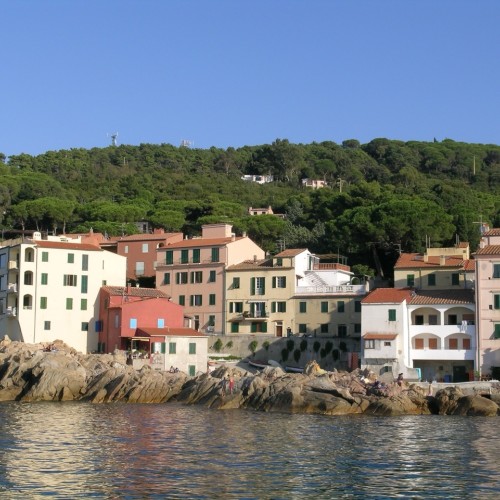
The town of Marciana Marina grew up at the end of the 18th century on the north coast of the island, at the foot of Mount Capanne and the much older centres of Poggio and Marciana, built higher up due to the threat Saracen raids. The settlement probably originated from a primitive nucleus of agricultural and maritime storehouses, becoming a residential area when Elba's coasts were no longer at risk from barbarian attacks. The oldest building - the tower built on a granite outcrop to the west - is a reminder of that ancient danger. It would have been the only building guarding that stretch of coast against pirate attacks. The oldest part of the inhabited settlement, on the other hand, is recognisable as the Il Cotone nucleus, to the east, which takes its name from the large granite cliff, or cote, on which it is built. This district has all the features of an ancient seaside town, perched on the rocks with a small natural inlet providing shelter for sailing vessels.
Il Cotone is a jewel of folk architecture in which the houses huddle together, jostling for space on that small area of rock above the sea, the roads consisting of alleys, stairways and narrow streets. In the 19th century, as the town's economic activities and population increased, the original nucleus expanded to the west, along the beach which ends at the other rocky outcrop topped by the tower. The long pier did not yet exist, its construction not beginning until 1911, so this outcrop provided the only shelter from the westerly and northwesterly winds. The people of Marina, caught between the mountain and the sea, opted for the liquid element, becoming sailors and fishermen and developing commercial shipping as well as a shipyard for building small sailing boats.
The town grew, its beautiful seafront encircled by more stately houses bordering the countryside, with vineyards and orchards reaching upwards, surrounded by walls protecting them from the wind and salty sea spray. In the early 20th century, there was a fine row of tamarisks on the seafront, along the quay, still there today, grown into ancient trees with majestic, twisted trunks. Tamarisks are depicted in the works of the famous painter Llewelyn Lloyd, of British parentage but born in Livorno, who studied and perfected the Macchiaioli technique and chose Marciana Marina as his summer residence.




